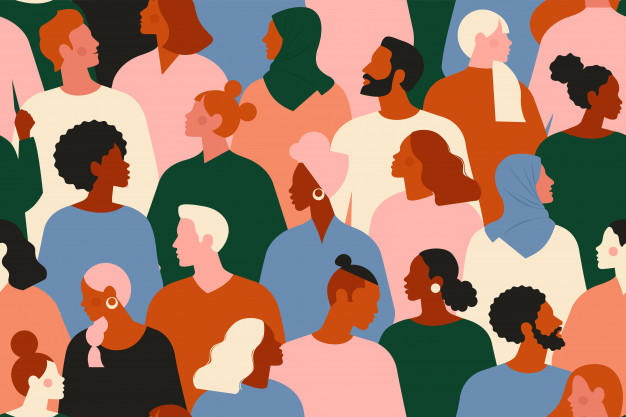We are all in some way feeling the impact of COVID-19, no matter our race, nationality, gender, or ability. But cis and trans women and non-binary people of color—who experience deep-rooted inequities—are feeling the impact in very distinct ways. Responding with a gender and race lens underscores understanding the specific risks and vulnerabilities women and girls of color face. Some of them include:
Women of color are overrepresented in low-wage occupations and are disproportionately affected by poverty
Women of color are much more likely to experience poverty at higher rates and to work in the low-wage occupations bearing the brunt of the economic losses of the pandemic. Almost 27 percent of Black women and 16 percent of Latinas in the District live below the poverty level, and in the DMV region, nearly two-thirds of all low-wage workers are women. Most of them immigrant (49 percent) or non-white (81 percent). Low-wage occupations are precarious, with numerous research highlighting limited access to paid sick leave and other benefits.
Women are most of frontline workers
Women are also more likely to be caregivers for the sick in both healthcare settings and at home, being disproportionately exposed to contagion through person-to-person contact. In DC, more than half (52.3 percent) of physicians and surgeons, and almost three out of four (73 percent) professional nurses are women.
Increased risk of violence
Travel restrictions and mandatory lockdowns to curb the spread of COVID-19 are escalating gender-based violence incidents in the District. Victims have more difficulty reporting abuse, getting medical care or seeking refuge at their parent’s or friend’s homes. And advocates are dealing with unprecedented challenges to offer help. Domestic violence is also major factor contributing to unstable housing.
Women of color make up the largest share of women who experience homelessness
Unhoused women face unique challenges. They have difficulty accessing health care, menstruation products, or childcare. Are more likely to have poor mental health or chronic illnesses, and they deal with concerns for their personal safety on a regular basis. While the homeless population at large in the District is male, most adults in families without homes are women (79 percent), and women of color make up the largest percentage of women who experience homelessness (90 percent).
As the coronavirus spreads, unhoused individuals are among the most vulnerable to infection. Shelters are operating at full capacity with limited staff or volunteers, spaces to quarantine those who test positive are inadequate, and public spaces where homeless women met most of their basic needs—like meals or toilets—are now closed. People over the age of 60 are also more susceptible to COVID-19 and in the District 60 is the most common age for homeless women.
Reproductive health services dwindle during pandemics
Evidence from past epidemics indicate that health care systems divert resources from reproductive and sexual health care services to contain the crisis, yet women continue to require family planning, maternal health care, and safe abortions. The District is already experiencing a maternal health care crisis that impacts Black women and low-income residents the most, as a result of lack of access to preventive and prenatal care.
For us at The Women’s Foundation, it’s important to highlight the specific vulnerabilities women of color are facing during the pandemic, especially when most health executives and decision-makers are men—the White House Coronavirus Task Force includes just one woman of color, out of 25 members. Women of color are on the frontlines of the crisis, and their voice and lived experience must inform preparedness and response policies and practices.
Claudia Williams is Program Officer at Washington Area Women’s Foundation where she contributes to crafting and executing program strategy.



